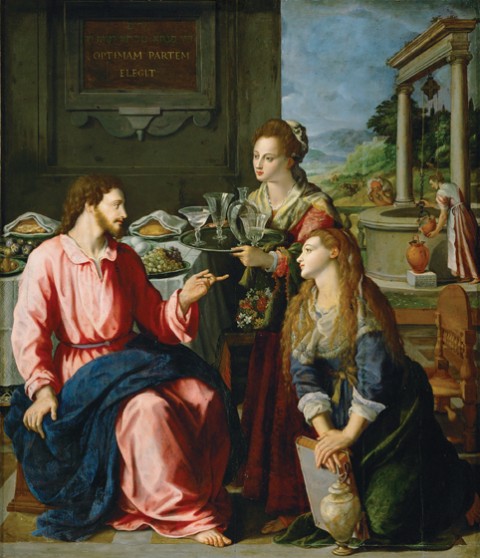Christ with Mary and Martha, by Alessandro Allori (1535–1607)

Mary and Martha are often portrayed as being in conflict with one another during Christ’s visit to their home. Martha is traditionally depicted hurrying around preparing food and drink to make Christ comfortable while Mary sits at the feet of Christ learning. But in this painting by the Florentine artist Alessandro Allori, dated 1603, both women are attentive to Christ and are in harmony. Allori, a second-generation Mannerist who was known for his brilliant color palette, elegant profiles and elaborately stylized garments, identifies the roles of the women. Martha has a tray with glasses, ready to quench the thirst of Christ. She represents, in the history of interpretation, the vita activa. Mary, representing the vita contemplativa, is kneeling and leans toward Christ as she steadies herself on a book (presumably the Bible), emblematic of her studious devotion. St. Ambrose observed: “Virtue does not have a single form. In the example of Martha and Mary, there is added the busy devotion of the one and the pious attention of the other to the Word of God” (Exposition of the Gospel of Luke). Still, Christ gestures toward Mary, a reminder that Mary’s is “the better part,” because actions—even acts of Christian charity and hospitality—if they are to be sustained, follow being. What we do flows naturally from who we are.





